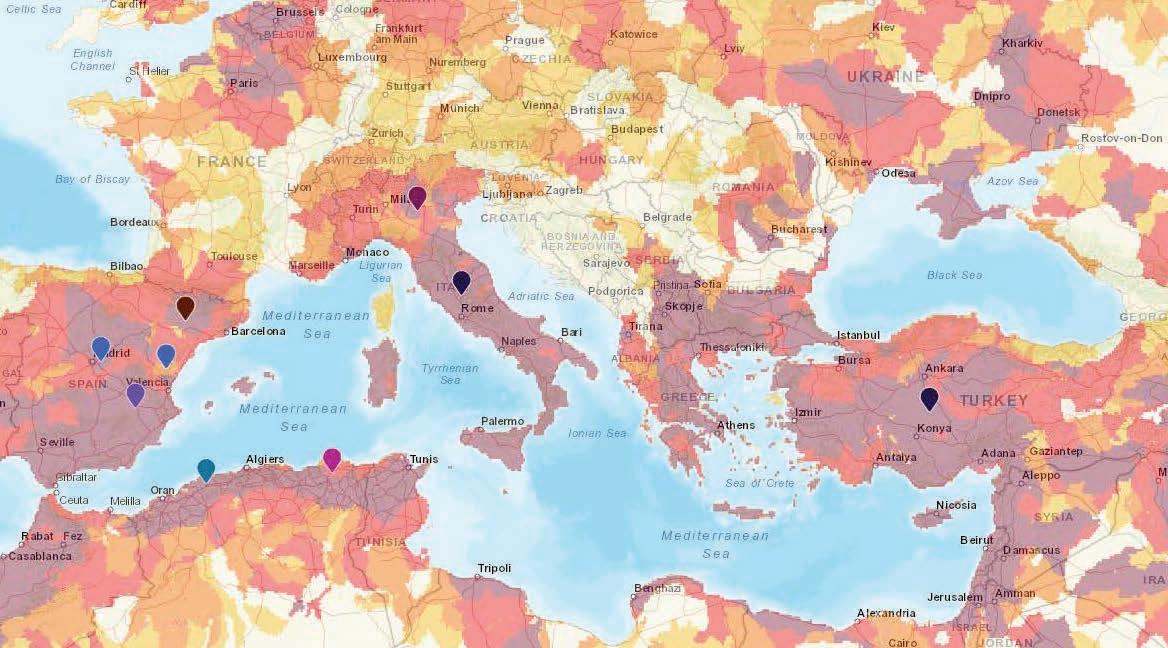
2 minute read
Woodwell and partners weigh in on climate risk disclosure
by Dr. Heather Goldstone
Chief Communications Officer
Map generated from Wellington’s Climate Exposure Risk Application (CERA)
In March, the SEC issued a request for public input on potential regulation of corporate climate risk disclosure. In the intervening months, Woodwell sta have been working alongside our partners to share the insights we have gained from years of working on corporate climate risk, and to ensure that federal regulators and policymakers understand the importance of ensuring scientific integrity in such disclosures. The results of that work have been made public over the past week. On June 10, 2021, Woodwell Climate and Wellington Management jointly launched P-ROCC 2.0, an update to our 2019 guidelines for corporate climate risk disclosure that recommends the disclosure of time horizon and key assumptions (including climate data) used in assessing risks, as well as the physical attributes of the company’s business. “As we continue to expand our climate research, it is becoming increasingly clear that our investors and clients will benefit from deeper climate-related information at the company level,” said Jean Hynes, incoming CEO of Wellington. “We encourage companies to facilitate access to their physical location data as this is a critical component that will help us incorporate deeper
physical and transition risk climate analysis on behalf of our clients.” Both Woodwell and Wellington also submitted public comments to the SEC emphasizing the need for federal regulators to create a framework that ensures corporate climate risk assessments are rigorous, standardized, and transparent. An array of parties In particular, Woodwell’s comments called for requiring that o ered input—investment data and methodologies be publicly accessible and that climate firms, energy companies, models be published in mainstream peer-reviewed scientific literature. green groups and plenty in between. But one “As a climate science organization, we see a clear need for a standardized and transparent climate risk disclosure stood out from the crowd: framework,” wrote Dave McGlinchey, Woodwell’s Chief the Woodwell Climate of External A airs. “A rigorous and properly constructed framework can provide investors with key material information Research Center. necessary to evaluate their investments.” Andrew Freedman, Axios This message was echoed in a public briefing co-hosted by Niskanen Center and Woodwell Climate, a story in Axios, and finally, in an op-ed in The Hill authored by Woodwell President Dr. Phil Du y, Woodwell Board member Bob Litterman, and Niskanen Director of Climate Policy Joseph Majkut. “It is critical that risk disclosure be based upon transparent and publicly accessible models and data. Without this requirement, disclosures may be inaccurate, misleading, or impossible to interpret and compare between firms,” the three warned.



